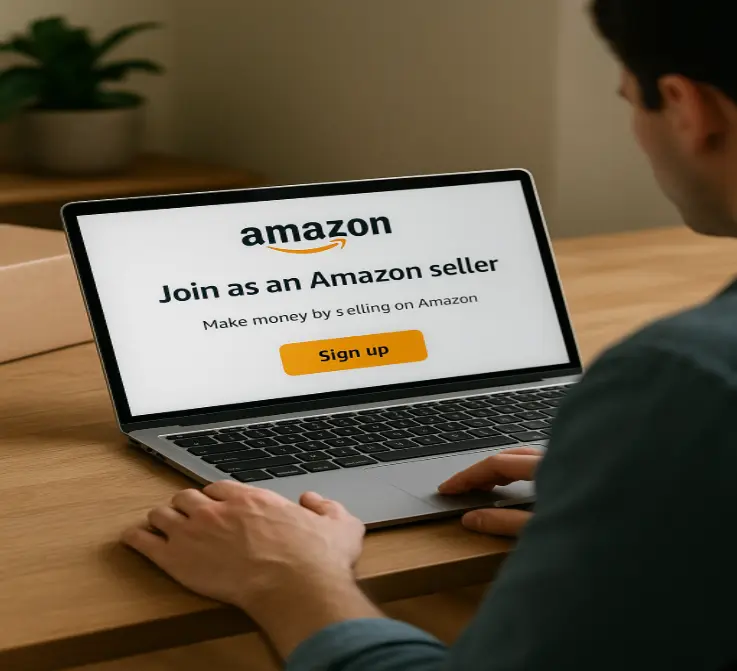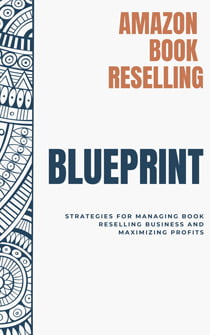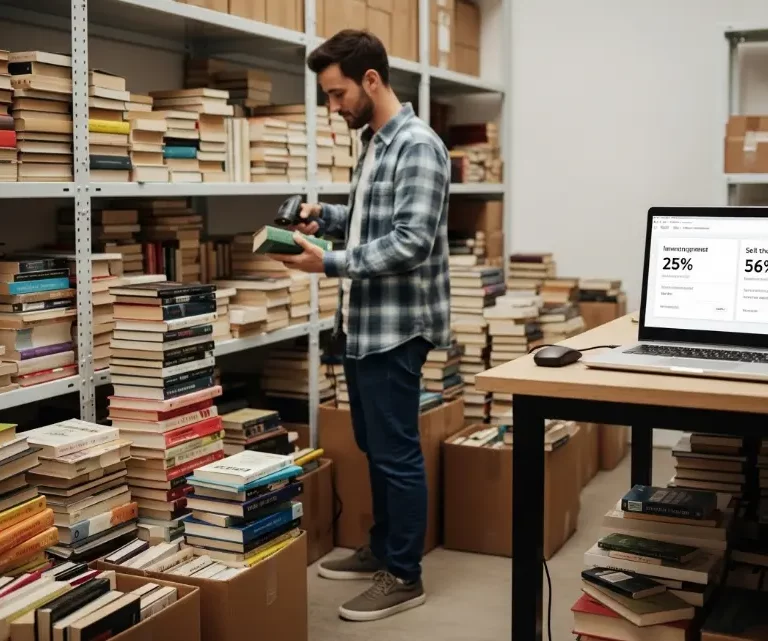What Can I Sell on Amazon as a New Seller? A Beginner’s Guide

Selling on Amazon is one of the easiest ways to start an online business. With millions of buyers and built-in logistics, it’s a great place for beginners. But success starts with choosing the right products. Some categories are open and beginner-friendly, while others require approval.
In this guide, we’ll show you what you can sell on Amazon as a new seller—and what to avoid—so you can start strong and grow with confidence.
What are Amazon’s Product Category Types?
Before listing your first item on Amazon, it’s important to understand how the platform organizes and controls what sellers can sell. Amazon divides its product categories into two main types: open categories and gated (restricted) categories.
Open Categories (Ungated)
These are categories where anyone—even brand-new sellers—can list products without needing special permission. Some popular open categories include:
- Books
- Home & Kitchen
- Toys & Games (some brands may still be restricted)
- Office Products
- Pet Supplies
Starting in these categories is ideal because it allows you to quickly list and sell items without delays or extra paperwork.
Gated Categories (Restricted)
Gated categories require approval from Amazon before you can list products in them. This is often due to safety concerns, brand protection, or the potential for counterfeit products. Some common gated categories include:
- Grocery & Gourmet Foods
- Health & Personal Care
- Beauty
- Jewelry
- Automotive
- Certain brands (e.g., Nike, Apple) even within open categories
If you try to list an item in a gated category, Amazon will notify you and provide a link to apply for approval.
How Gating Works
To get approved in a restricted category, Amazon may ask you to:
- Provide invoices from a legitimate wholesaler or distributor
- Submit product images and packaging
- Show proof of business or brand authorization
- Meet performance metrics (like good account health and consistent sales)
The approval process varies depending on the category and product, and it may take a few days to several weeks.
Why Stick to Ungated Categories First?
For new sellers, starting with ungated categories removes a lot of complexity and risk. It allows you to:
- List products faster
- Gain experience and sales history
- Avoid potential rejections or account flags
- Focus on learning how Amazon works
Once you’ve built some momentum and have a solid understanding of the platform, you can start exploring gated categories if you want to expand.
All in One Software
for Book Sellers
Scout Better – List Faster – Reprice Smarter
Over 30% Business Growth
Achieved by Our Clients

Best Product Categories for New Amazon Sellers
1. Books
- Easy to source (e.g., thrift stores, book sales)
- High ROI potential
- No approval needed for most listings
2. Home & Kitchen
- Everyday items with consistent demand
- Relatively low competition for niche products
- Lightweight and easy to ship
3. Office Supplies
- High turnover for essentials (e.g., pens, paper, organizers)
- Great for bundles and multipacks
4. Toys & Games (during certain seasons)
- Ungated brands can offer strong Q4 sales
- Tips on checking brand restrictions
5. Pet Supplies
- Growing niche with many ungated options
- People are willing to spend more on pet care
Products to Avoid as a New Seller
When you’re just starting out on Amazon, it’s tempting to jump into trending products or categories that seem profitable at first glance. However, not all products are beginner-friendly. Some can lead to account issues, slow sales, or even financial loss if you’re not careful.
Here are the types of products you should avoid as a new Amazon seller:
1. Gated or Restricted Products
Selling in restricted categories or listing brand-restricted items without approval can lead to listing removal or account suspension. Always check if a product or brand requires permission before listing it.
2. High-Risk Categories
Categories like supplements, health products, and beauty items may seem profitable, but they’re highly regulated. You may be asked for lab tests, certificates, or specific documentation. These are best saved for later once you’re more experienced.
3. Electronics and Tech Gadgets
While electronics can have high price tags, they also come with a higher rate of returns, technical issues, and customer complaints. As a new seller, it’s risky to handle items that are fragile, complex, or require warranty support.
4. Oversized or Heavy Items
Larger products cost more to ship and store in Amazon’s fulfillment centers (if using FBA). These fees can quickly eat into your profits. Stick to small, lightweight products at first to keep costs down.
5. Seasonal or Trendy Products
Products tied to short-term trends (like fidget spinners or holiday decor) can be unpredictable. You might end up with unsold inventory once the trend fades or the season ends. Focus on items with steady, year-round demand.
6. Counterfeit-Prone Brands
Well-known brands like Nike, Apple, or Disney are often targeted by counterfeiters. As a result, Amazon keeps a close eye on these listings. Selling them without authorization—even if your product is genuine—can trigger problems with your account.
Pro Tip: Start with simple, everyday products that don’t require approvals, are easy to ship, and have a steady demand. It’s better to build a reliable, profitable foundation before expanding into more complex categories.
How to Research Profitable Products
Finding the right product to sell is one of the most important steps in building a successful Amazon business. It’s not just about choosing what looks popular—it’s about identifying items that are in demand, offer good margins, and have manageable competition.
Here are a few simple strategies to help you research profitable products:
1. Check Amazon Best Sellers
Amazon’s Best Sellers page is a goldmine for beginners. It shows you the top-selling products in every category, updated hourly. Browsing this section gives you a feel for what’s currently popular and can help you spot consistent trends.
2. Look at the Sales Rank (BSR)
Every product on Amazon has a Best Sellers Rank (BSR). Lower numbers mean higher sales volume. For example, a BSR under 10,000 in most categories suggests frequent sales. Look for products with consistently low BSRs, as they usually indicate healthy demand.
3. Use Product Research Tools
There are powerful tools that help analyze product data at scale. A few popular ones include:
- Keepa – Shows price and sales rank history over time
- Bookz Pro – Ideal for Amazon book resellers; offers profitability insights and sourcing tools
These tools take the guesswork out of research by providing real data on pricing trends, inventory levels, and average monthly sales.
4. Check Reviews and Ratings
Products with thousands of reviews might mean high competition. Newer items with fewer reviews but steady sales could be easier for new sellers to compete with. Also, browse the 3-star reviews to spot product flaws—this can help you improve your listing or offer a better variation.
5. Evaluate Profit Margins
Not every item that sells well is profitable. Make sure to factor in:
- Amazon fees (FBA fees, referral fees)
- Shipping and packaging costs
- Product cost (your sourcing price)
Use Amazon’s FBA Revenue Calculator or a tool like Bookz Pro to estimate your net profit before listing anything.
6. Avoid Saturated Niches
If you find a product and notice that every seller has thousands of reviews, high ad spend, and very similar listings, it may be a red flag. Look for niches where you can offer a unique bundle, improved packaging, or target a specific customer group.
Bottom line:
Successful product research is about combining demand, profit potential, and low competition. Take your time, use the tools available, and test small batches before scaling up. Smart research now saves you headaches (and money) later.

Sourcing Ideas for New Sellers
Once you know what to sell, the next big question is where to find those products at a low enough cost to turn a profit. The good news? You don’t need a huge budget or a warehouse full of inventory to get started. Many new sellers begin with simple, low-cost sourcing methods that are easy to test and scale over time.
Here are some great sourcing ideas for beginners:
This involves buying discounted products from local retail stores and reselling them on Amazon for a profit. Look for clearance aisles, seasonal markdowns, and store-wide sales.
Where to look:
- Walmart
- Target
- TJ Maxx
- Ross
- Local supermarkets or pharmacies
Tip: Use the Amazon Seller app to scan barcodes in-store and check if an item is profitable before buying.
Similar to retail arbitrage, but you’re sourcing deals from online stores instead of physical ones. This method is great if you prefer working from home or don’t have easy access to large retailers.
Where to look:
- Overstock
- eBay
- Facebook Marketplace
- Store websites (clearance sections)
Tools like Keepa or Bookz Pro can help track price trends and estimate profits.
If you’re selling in open categories like books or home goods, thrift shops can be goldmines. Books, in particular, can be sourced for as little as $1 and resold for much more on Amazon.
Places to check:
- Goodwill
- Salvation Army
- Local charity shops
- Weekend garage and estate sales
This low-risk method is perfect for learning the ropes and building your profit margins with minimal investment.
4. Wholesale Suppliers
Once you’re comfortable with Amazon’s system, buying wholesale is a great way to scale. You purchase products in bulk directly from suppliers at discounted rates, which often allows for better margins.
Where to find suppliers:
- Faire
- Alibaba (for larger volume imports)
- Wholesale directories like SaleHoo or Inventory Source
Note: Some wholesalers may require a business license or tax ID.
5. Book Pallets and Liquidation Lots
For sellers focused on books or general merchandise, buying in bulk can offer huge savings. You can often get pallets of overstock or returned books/items at pennies on the dollar.
Where to explore:
- BulkBookstore
- Liquidation.com
- B-Stock
- Local liquidation warehouses
Just be sure to research condition and category restrictions before investing.
Final Tip:
Start small, especially when testing a new source. Track your costs, check Amazon’s selling restrictions, and always calculate potential profit before you buy. As you gain experience, you’ll naturally discover which sourcing methods work best for your goals and budget.
Take the Guesswork Out of Selling on Amazon

Amazon Book Reselling Blueprint
Read now, explore our full guide. Your revolution starts here. Subscribe to get the blueprint!
When looking for a tool for new Amazon sellers who want to make smarter sourcing decisions, avoid costly mistakes, and start profiting faster– try Bookz Pro. From scanning and analyzing books in seconds to tracking profitability and managing inventory, Bookz Pro gives you everything you need to get started on the right foot. No guesswork—just clear data, smart insights, and tools built specifically for Amazon resellers.
Plus, when you sign up, you’ll get a free blueprint packed with proven techniques and beginner strategies to help you source, list, and scale more effectively. Start selling smarter with Bookz Pro today—your Amazon success story begins here.
Conclusion
If you’re a new seller wondering what to list first, books are hands-down the best and easiest starting point on Amazon. With open category access, low upfront costs, and high potential returns, books allow you to quickly gain experience and build your sales history without the hurdles or risks found in other categories. As you grow, you can branch into home goods, office supplies, and more—using what you’ve learned selling books as your foundation for lasting success. Focus on books to start strong, learn the process, and make your first sales with confidence.
Frequently Asked Questions
Used books, home goods, and office supplies are often the most profitable for new sellers. They’re easy to source, low-risk, and offer strong margins—especially with tools like Bookz Pro to analyze real-time profits.
Start with ungated items like books, home & kitchen, office supplies, and some toys. They’re beginner-friendly, low-cost, and easy to ship.
Not always. Many categories are open to new sellers, but some (like Grocery or Beauty) are gated and require approval.
Gated categories are restricted areas that need Amazon’s approval. You’ll usually need invoices from suppliers, product images, or compliance documents to get access.
Try retail and online arbitrage, thrift stores, wholesale, or liquidation lots. Use Bookz Pro to scan and check profit potential before you buy.



